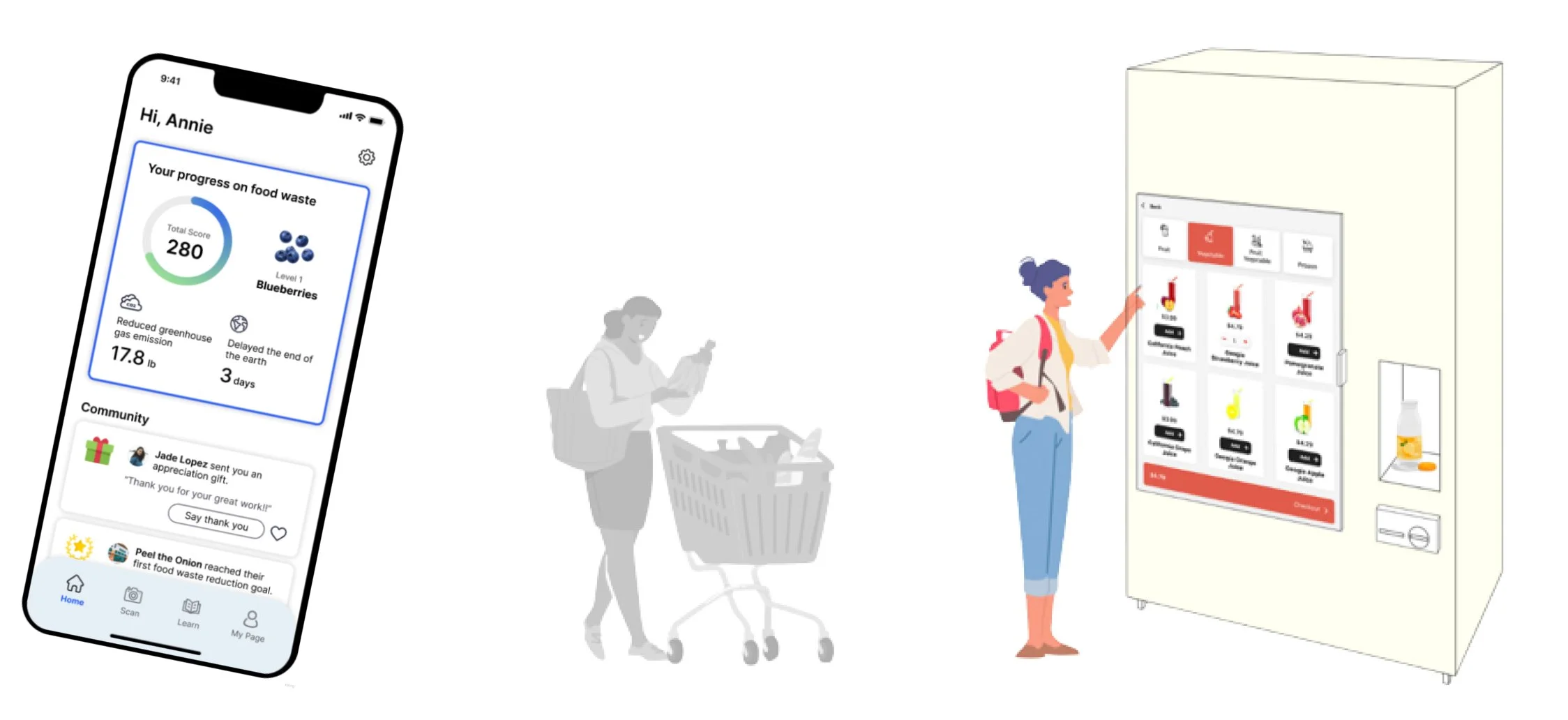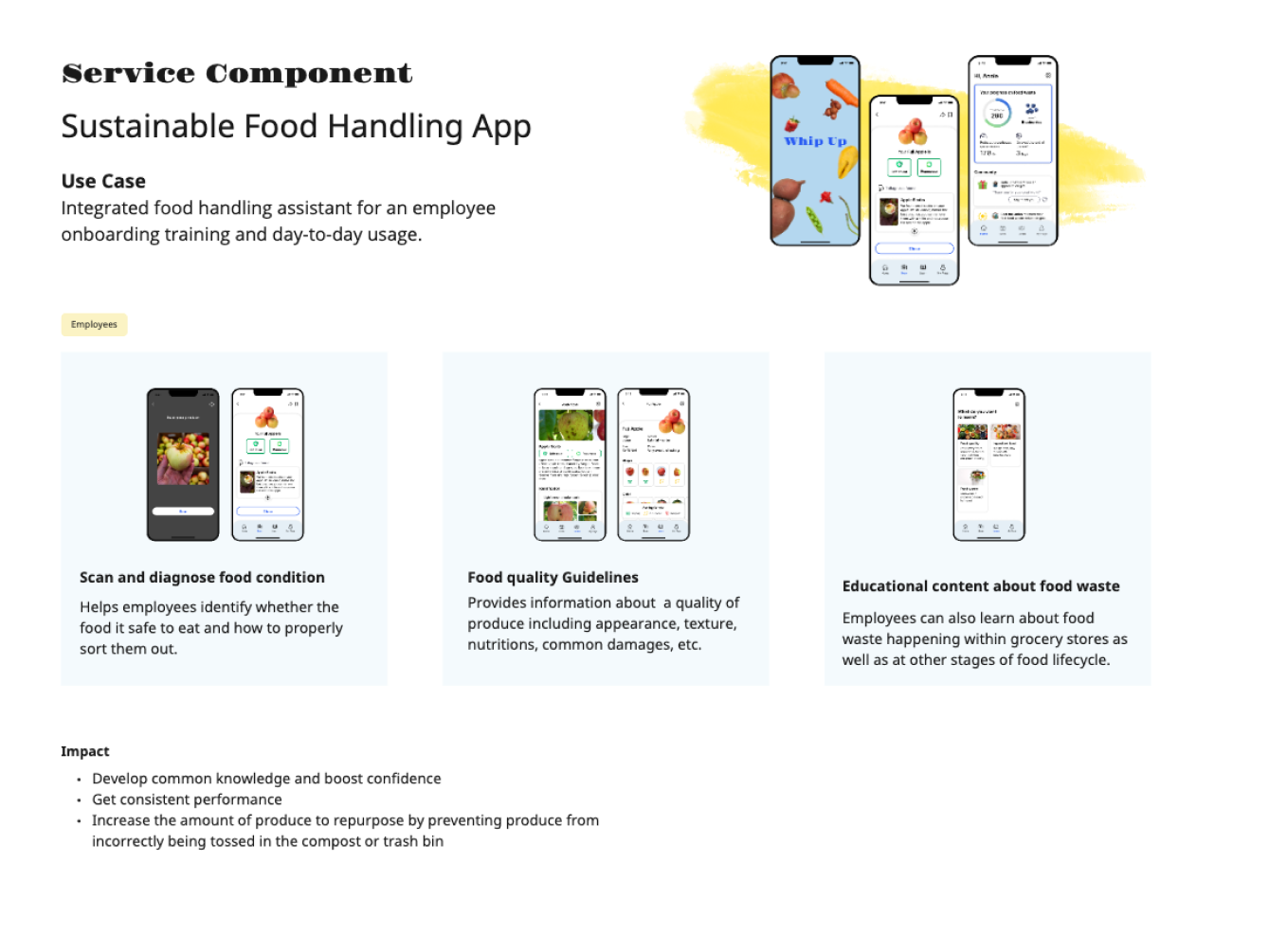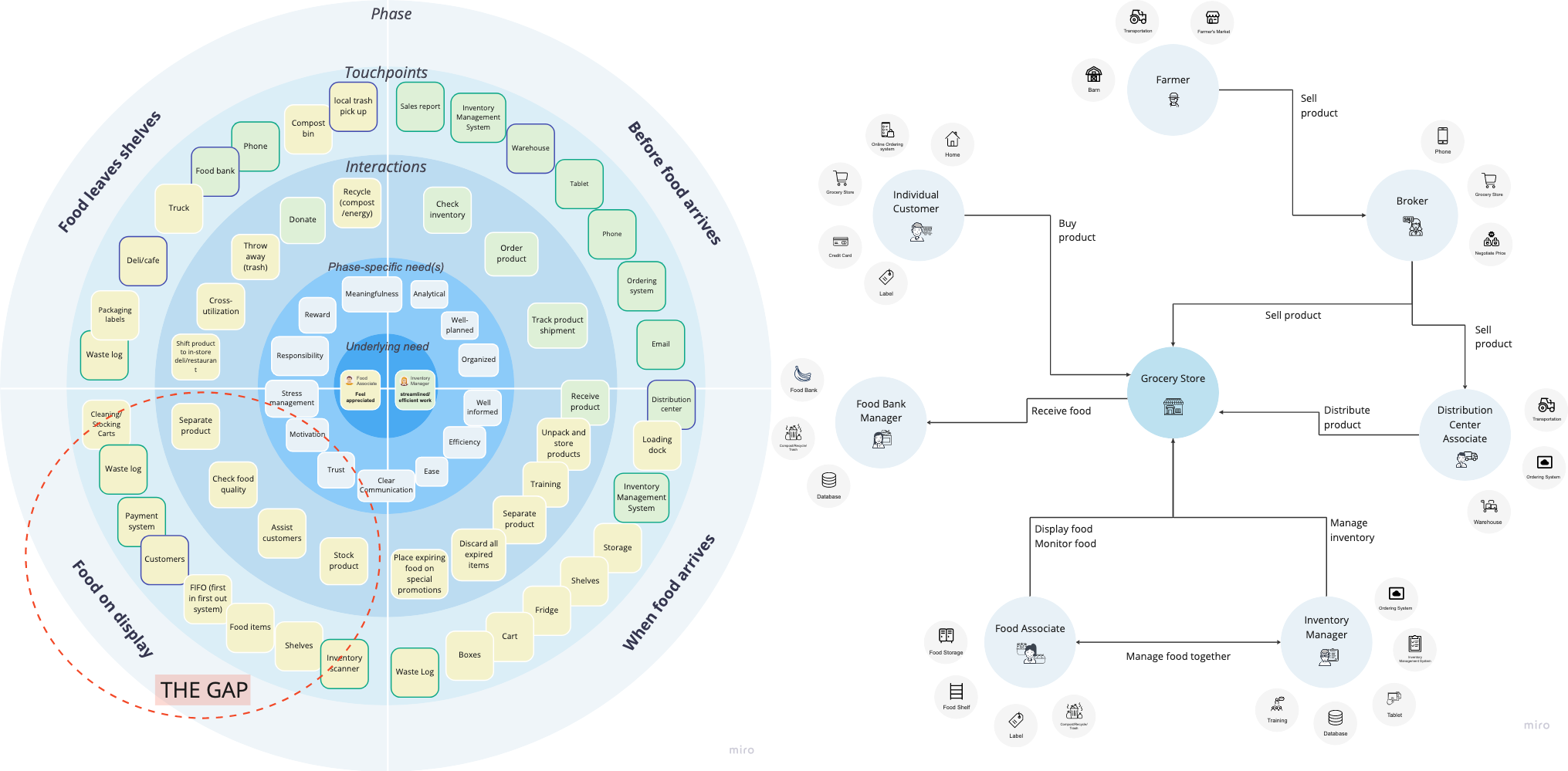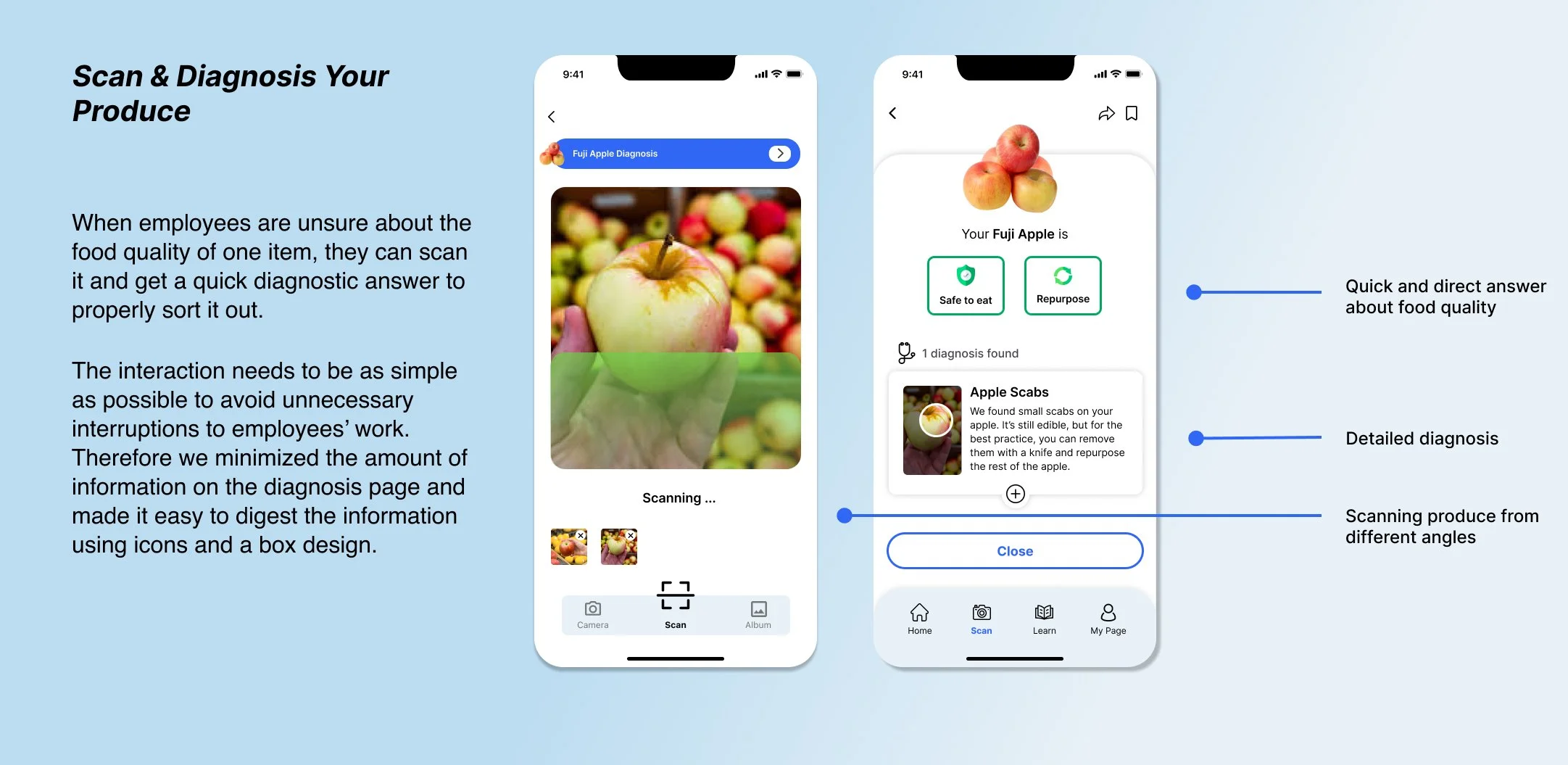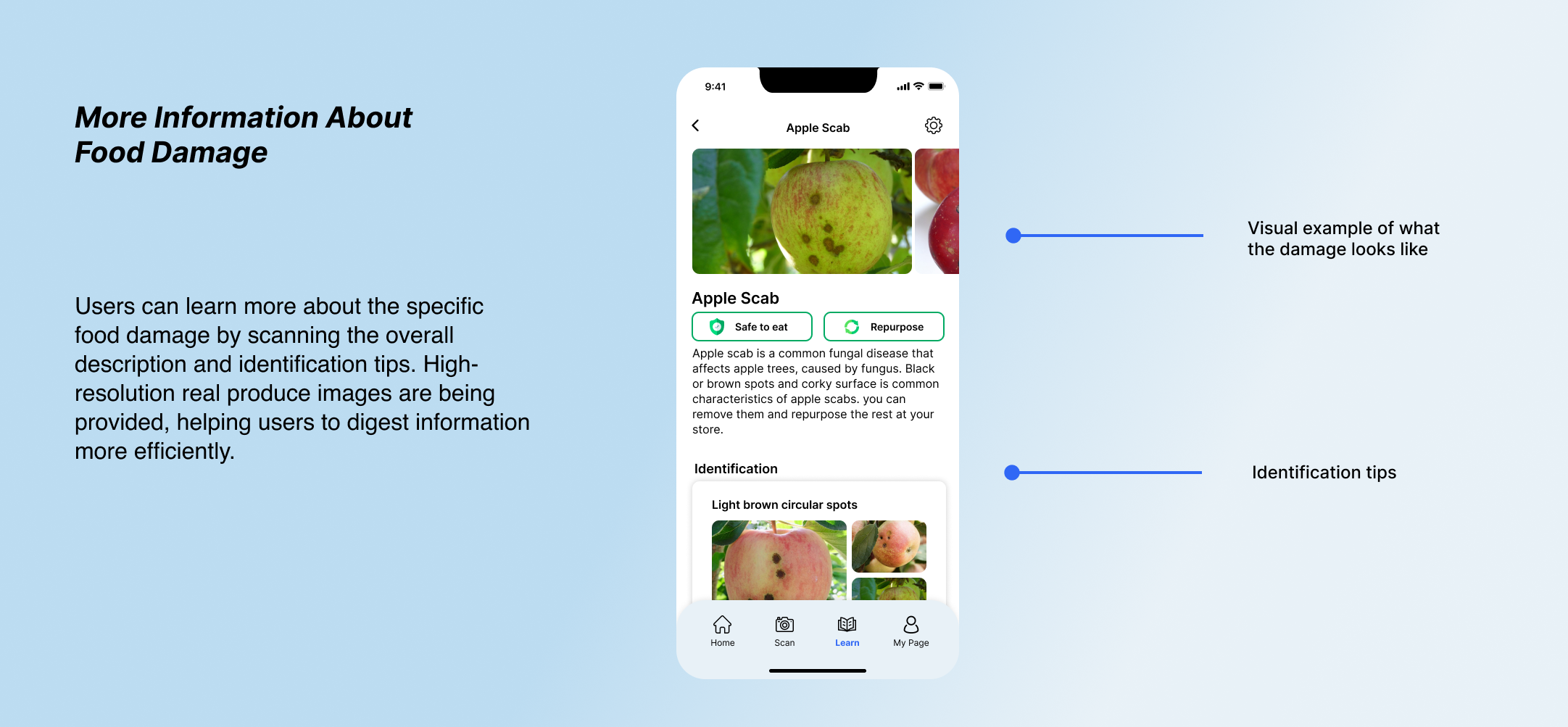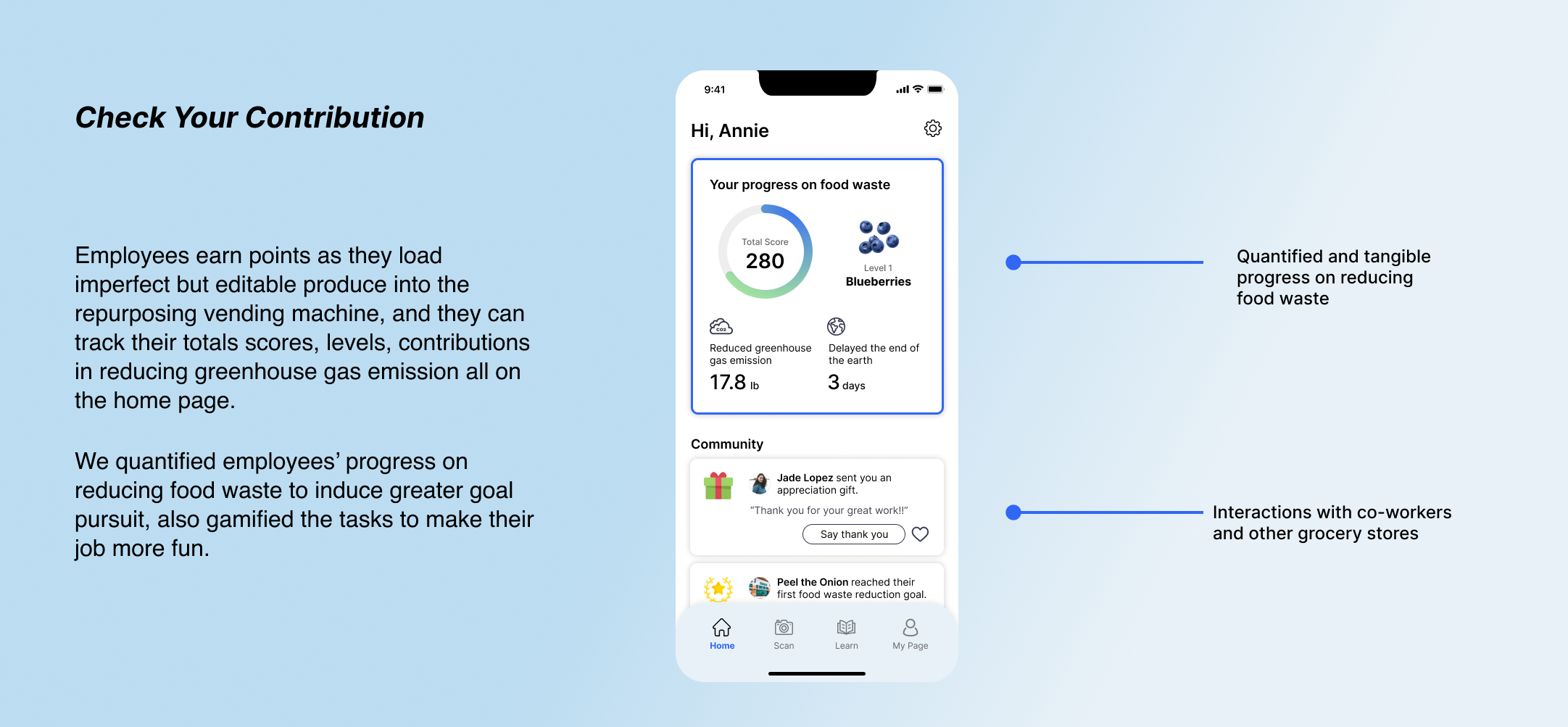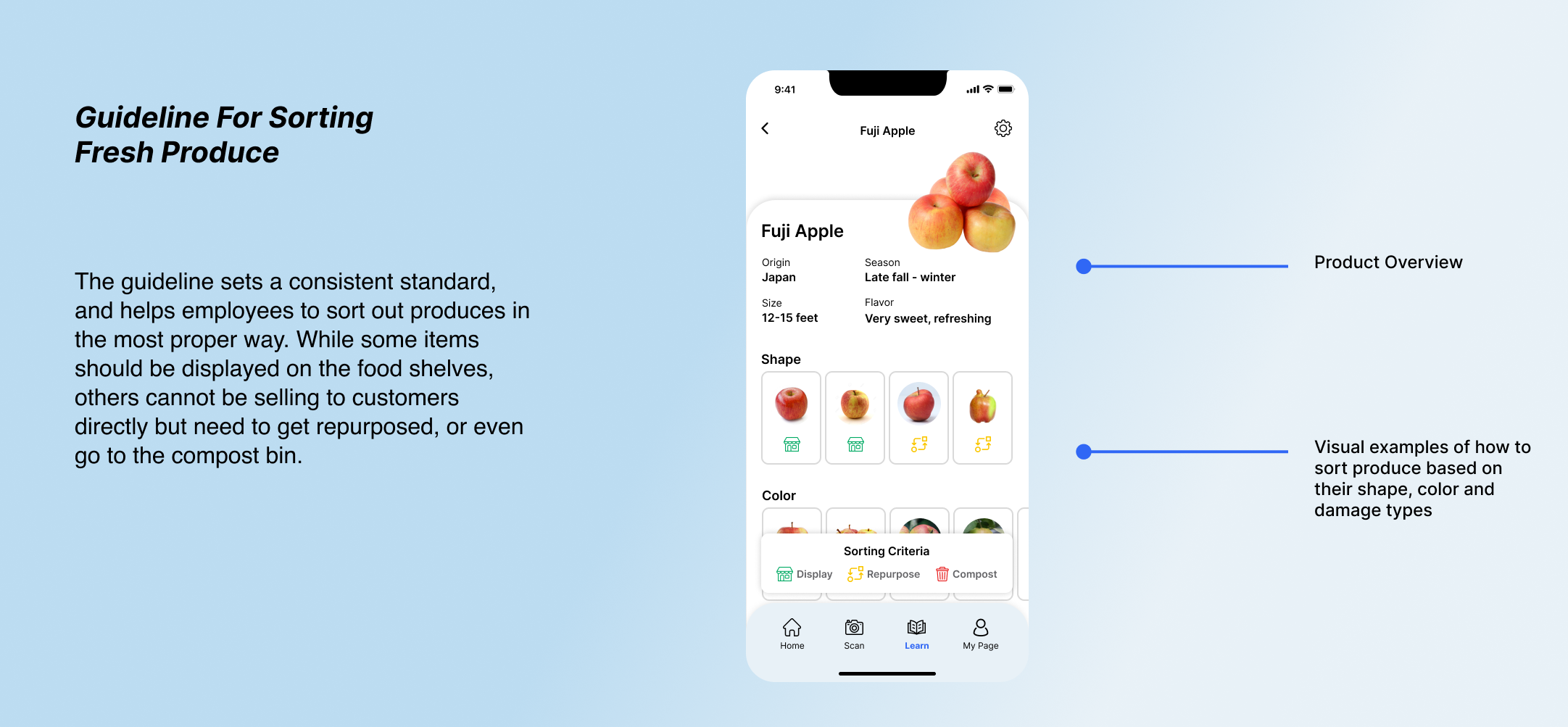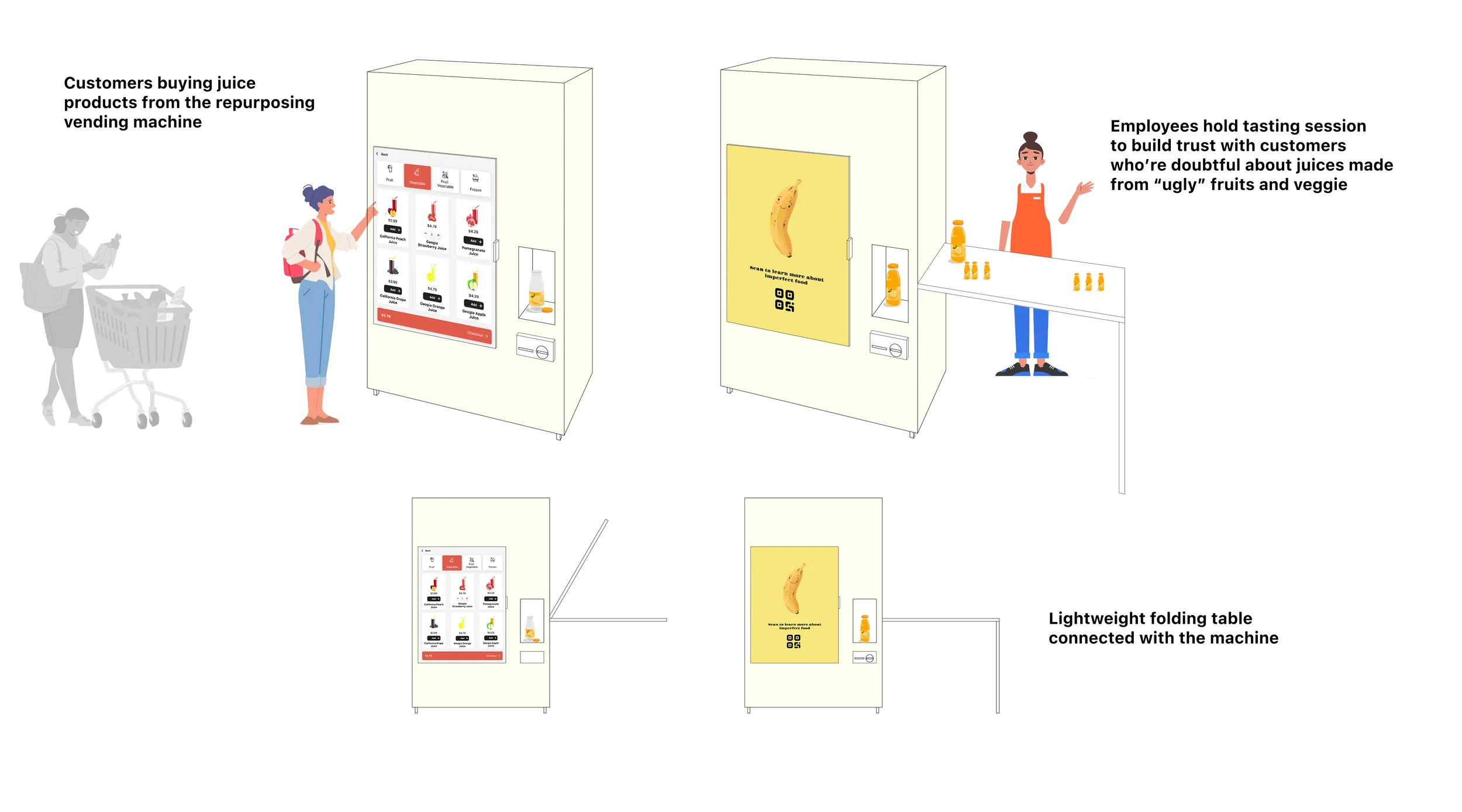Whip Up
An integrated service that boost employees empowerment and sustainable action at grocery stores
My role & practices
Service Designer
Ecosystem Map
Co-Design
Narrative Workshop
Service Blueprint
Prototypes & 3D Design
Tools
Miro
Figma
Rhino
Adobe Premiere
Project Info
11 Weeks
Group Project
Service Design
Design Strategy
The Problem Space
How might we reduce food waste at grocery stores?
Each year, billions of pounds of perfectly good food go to waste in the U.S, and around 60% of the food waste happens at the commercial level (eg, restaurants, grocery stores, distribution center, manufactures). Meanwhile, grocery stores contribute to 10% of the overall food waste. Considering the opportunity for designing services at scale and the power to impact food supply chain, we decided to design an integrated service to help grocery stores reduce food waste.
Take a sneak peek at our service 👀
Discovery Research
With some desk research about facts and data about the current situation about food waste, we conducted in-person contextual inquiry and semi-structured interview with five different grocery stores to understand our research questions: 1. What is the current situation of food waste? 2. What does food life cycle, and management process look like? 3. What are some needs and pain points? We used affinity diagram to analysis our qualitative data and map out different themes and eventually generated five key insights listed below.
Methods:
Desk Research
Contextual Inquiry
Semi-structured Interview
Recruitment:
Participants: 5 different grocery store employees
Location: Seattle, WA
Key Insights:
Ecosystem Map
Map 1 Map 2
Paid closer attention to the target customer's (Inventory manager and food associate) touchpoints and interactions with other stakeholders considering their needs and values.
Mapped out the relationships between a grocery store and other stakeholders involved in the food lifecycle from a broader view.
Co-Design Workshop
We recruited 3 participants who have experience of working at a food section in a grocery store and conducted a co-design workshop with them through the platform Miro. With the goal of understand participants’ values and mindsets in fresh produce management, we designed food sorting games and other activities that treat all participants as equal collaborators in the design process, encouraging them to generate diverse ideas to reduce food waste at grocery stores.
The documentation of our co-design workshop is shown below. Activities from left to the right respectively are, “Get familiar Miro as a tool”, “Understanding your work”, “Food sorting activity”, and “Idea generation”. After done this co-design workshop, we synthesized our key findings.
Key Findings:
Employee empowerment action needed: value misalignment between organization's and employees' organizations are not encouraging employees to reduce food waste.
Educational solutions needed: Employees don't get proper training or guidelines follow customers and organizations are obsessed with perfect food.
Management process needs to be improved: Some Issues with inventory management are, too many food are delivered and food comes in moldy/damaged, also too much food goes into compost.
Co-Design outcomes:
We identified 5 key actions that we want to facilitate through our new service solutions.
Narrative Prototyping
Acting out and immersing in the scenario helps us to emphasize with the stakeholders at a deeper level, thus we decided to make a creative and fun narrative prototyping by acting out.
From conducting the narrative workshop, we made reflections and gained some valuable insights that lead us to better design in the next step.
Long-term impact is important: Besides short-term impact, long-term impact of using the vending machine should also be emphasized in the following design.
Help customers to feel trustworthy: By thinking about trust issue, we need provide more stimulus to initiate customers
interact with vending machine and buy juice made from imperfect fruits. (eg, free sample )
Over-focused on micro-design: Instead of only focusing on the interaction between employees /customers and specific vending machine interfaces, some high-level interconnected interactions with other channels and service-scapes can also be considered in the future (eg, training program)
Ecosystem Journey Map
Service Blueprint
Since our team is designing a part of the services at grocery store, we created a specific, core experience of the new service. While employee's actions encompass majority of their work of the day, the customers actions are mainly focusing on the interactions with the vending machine and imperfect produce, and it doesn't include their holistic experience at a grocery store.
Prototypes
a) Sustainable food handling app
b) Food repurposing vending machine
Take Away
Solving problem not only from the standpoint of end-users, but also from back-stage section we’ve been neglected in the past is helpful. Grocery store employees who’re working at warehouse storage to unbox and sort fresh produces were always not seen by others, and aligning their needs and other front-stage stakeholders’ is helpful to design a more smooth, user-friendly service.
User’s decisions and behaviors were all deeply affected by the context, thus making strategical design decisions in which alter people’s values and perspective of imperfect but edible produces can make long-lasting positive impact toward sustainability.


